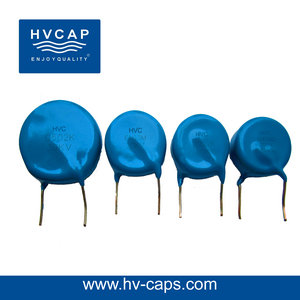Radio Controlled Squirrel and Pest Shocker- Application for HV Ceramic Disc Capacitor
This squirrel and pest shocking system is available in three modes of operation. |
The First Mode
Requires only the PSHK10 shocker module where you use the internal batteries consisting of eight AA cells inserted inside of the unit. You secure the shocker module at the base of the feeder pole using a strap or some other removable means. The green wire of the shocker is connected to earth ground on the shocker pole. You control the system by simply using the toggle switch on the rear of the module. This option allows the unit to be either on or off at your discretion. It does however require you to manually control the system.
The Second Mode
Similar to the first mode, but instead of batteries the 12V wall adapter is used, and the unit is controlled by an AC switch or simply unplugging the 12V wall adapter. This mode has the option of being left on all the time without worrying about batteries, as batteries are not used in this mode.
The Third Mode
The shocker is wirelessly controlled with our RC10 radio control unit. Simply plug the wire from the RC10 into the shocker (the RC10 can be powered by batteries or 12V wall adapter). Now you can control the system remotely, from up to 300 feet away, with a small key chain transmitter.
CAUTION: Shock hazard if not used as directed. May require installation and basic electrical skills.
For proper installation the metal pole must be used as the NEGATIVE CONTACT and a small surface for the POSITIVE CONTACT that must be insulated from the metal pole. The positive contacts can be two metal strips mounted on insulating plastic blocks. Now what happens as the squirrel comes up the pole he is making the negative contact, and then his front paws to continue his journey up the pole contact the insulated metallic strips on our insulating blocks and the poor little thing gets a shock and jumps off.
Our above explanation is for the way the system must be set up to protect the birdfeeder from the squirrels climbing up the pole. Now squirrels also get access to the birdfeeder in other ways, they can jump quite high and get right to the goods. It is going to be up to you to use your own ingenuity in setting up the shocking contacts for other situations that may arise. One thing you must be very aware of is not to rig up the electrodes they can get the birds because that’s going to defeat the purpose of the whole project but normally the birds will not make contact with the pole and any of the energized electrodes simultaneously that must occur with a squirrel that will have much more of a tendency to do so.
There are many other ways to rig up the contacts noting the positive contacts that must be insulated. Your methods are dictated by the way the animal gets access to the actual feed goods and we cannot cover every eventuality but the demonstration an explanation of what we presented here should give you the information you need at least to try other methods for these other situations.
For the positive contact points you may use several pieces of wire from 8 to 12 inches or whatever you think will work in your application. Each end of these wires should be attached to an appropriate piece of nylon string. Now the nylon string insulates the wires and serves as a method to stabilize and secure them in place. The wires are all connected together at some convenient point to connect the high-voltage output of the shock unit. Each wires should be spaced around the feeding station so that as the squirrel climbs up the pole he’s going to have to make contact with one of them.



